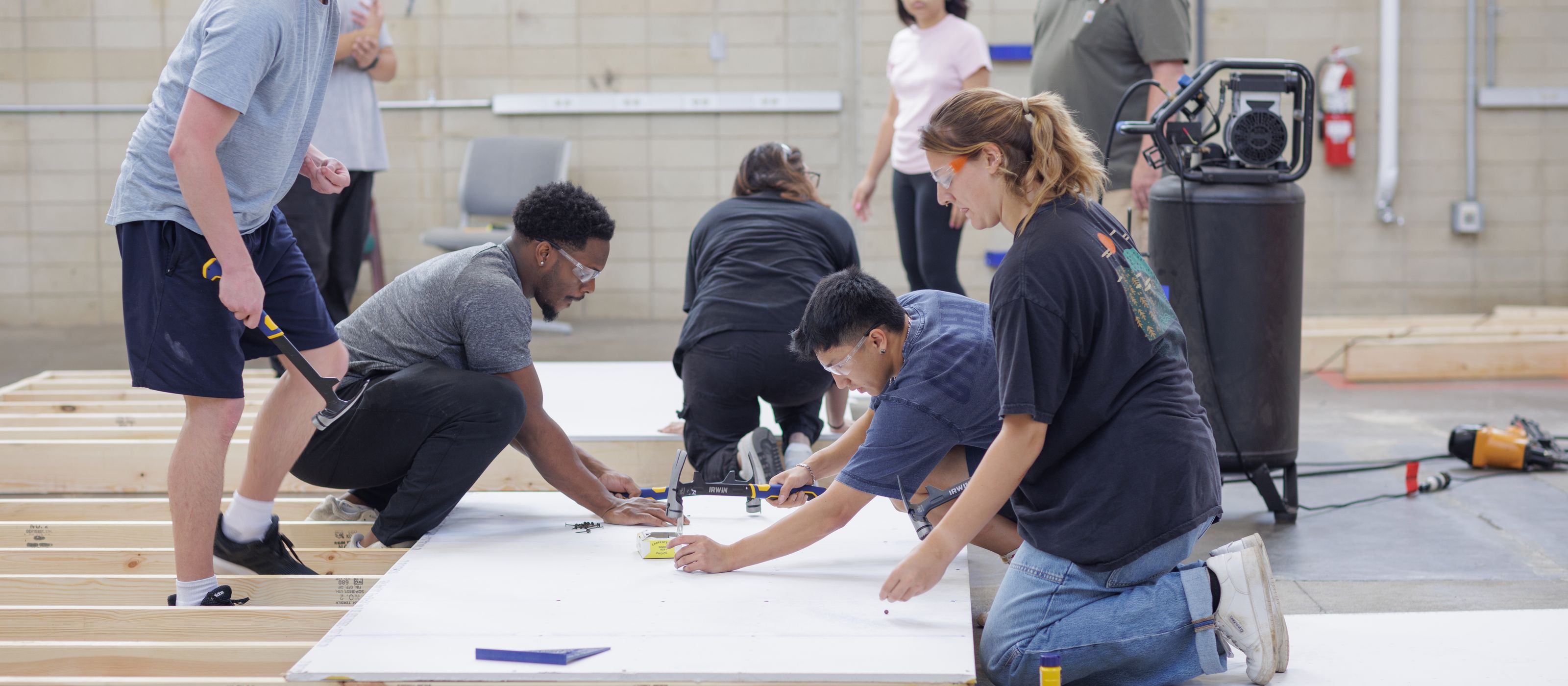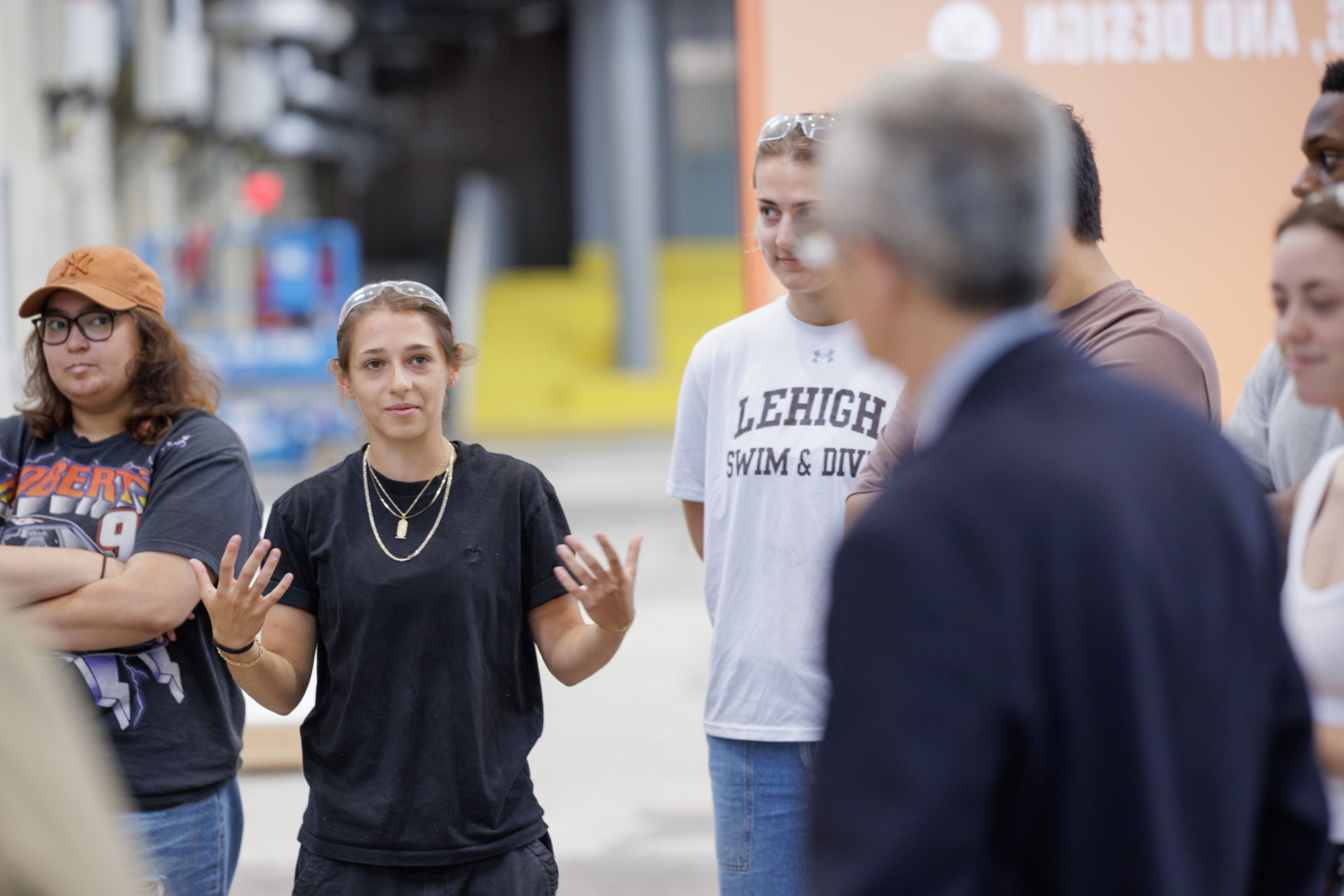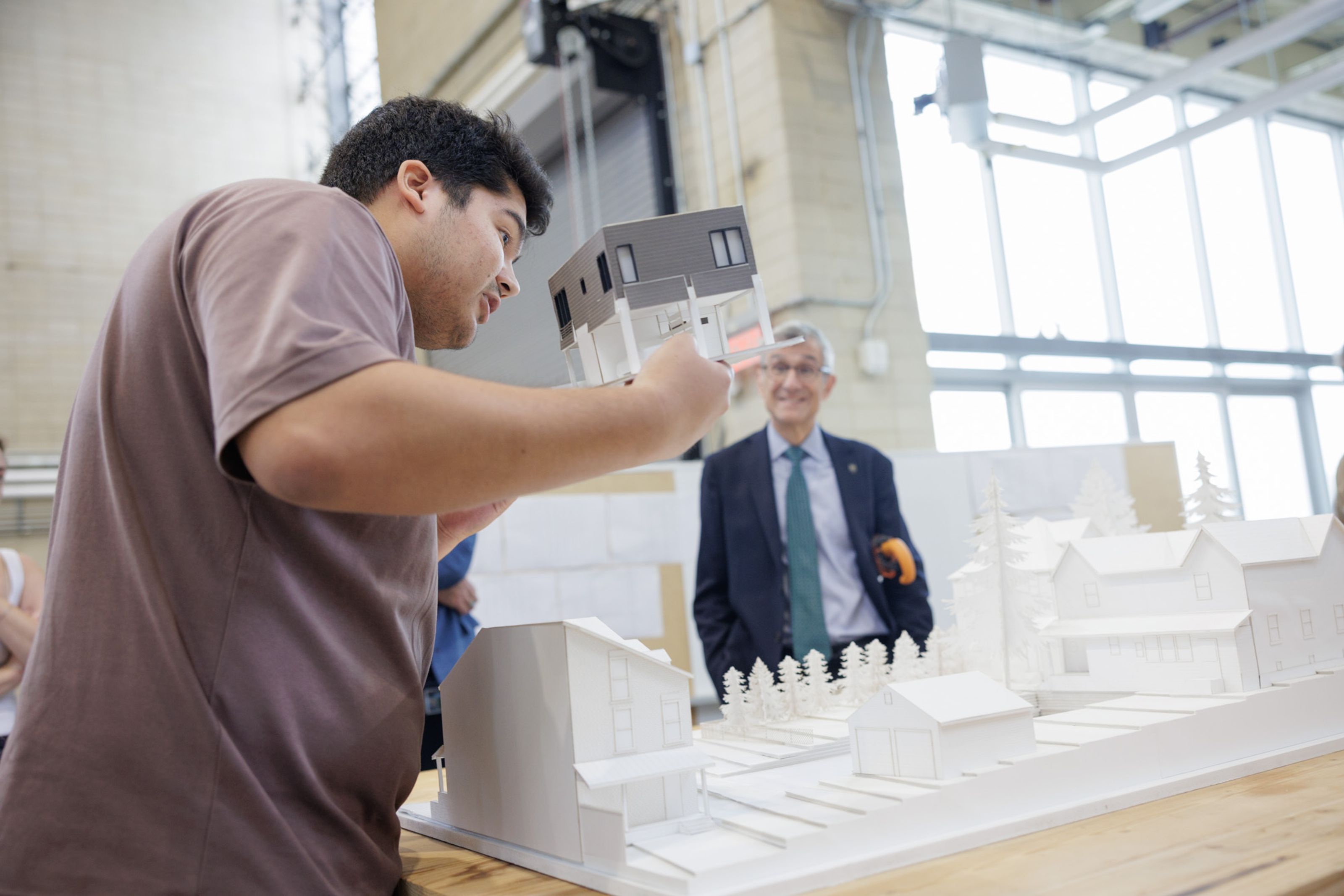
Oct 1, 2024
Isabelle O'Toole
Student Experience with the Alley House Program
Hands-On Experiential Learning at the Small Cities Lab
Over 60 students from four of Lehigh’s colleges have participated in research, civic processes, and construction. They surveyed alleys, mapped conditions, navigated zoning variances with city officials, and learned from experienced affordable housing developers how to design and construct Alley House units for long-term affordability.
In the spring of 2024, an interdisciplinary Alley House Program course, enrolling twelve students from across academic majors, split into four working groups: Policy, Design, Finance, and Public History. Students developed a database of accessory dwelling unit (ADU) policy across the country, created preliminary models for pilot alley house units, calculated potential costs of financing the alley house, and spoke directly to residents about their experiences living in existing alley houses in Bethlehem. At the end of the course, students combined their research into ten case study cities, with similar sizes and characteristics to Bethlehem, to inform the implementation of the Program’s pilot units and amendments to Bethlehem’s zoning ordinance.
Over the summer, students continued their work on the Alley House Program as summer fellows. Students note that after a spring semester of extensive research and knowledge building, their summer work consisted of surveying existing alley houses, creating final models and designs, and constructing the pilot alley house unit. Jill Fournier, a senior architecture major, who was a member of the finance working group, looking into federal, state, and local subsidies, mentions that her summer work offered a different learning experience. Over the summer, “I utilized Rhino to develop a range of kitchen renderings for the ADU, showcasing various design options. Using AutoCAD, I developed detailed section drawings for the kitchen cabinets as well as outlined the framing construction for the walls of the house. Finally, the last two weeks were spent with my colleagues as we collectively used our framing drawings to hand-build the wall frames for the second floor of the ADU,” says Jill.
Jill has worked on the finance, design, and construction components of the Program since January of 2024. She reflects on her multi-discipline work as “an important experience to have, especially as an undergraduate. It is not common for architecture students to have an opportunity to work first-hand on projects like the Alley House Program.” As Jill mentions, students were appreciative of the unique opportunity to work hands-on throughout the Program’s development.

She continues, “I had the privilege of experiencing what it was like to work with our partners like Community Action Development Bethlehem, the City of Bethlehem, and Community Action Lehigh Valley. To be able to be actively involved in the production of this project was unforgettable and enhanced my understanding of real-world architectural practice.” Jill recognizes the value of collaboration with community partners outside of the University, and she is especially cognizant of the impact of this new experience on her future work.
Students worked closely with Sara Satullo, Director of Community and Economic Development at the City of Bethlehem; Anna Smith, Director of Community Action Development Bethlehem; and Chuck Weiss, Associate Executive Director of Housing, Community Action Lehigh Valley. Satullo supported students in their policy research and helped students navigate zoning variances. Smith was crucial in expanding students’ knowledge on community engagement and development. Weiss guided students
during “the process of building the framing for the accessory dwelling unit. He taught us the fundamentals of framing and shared valuable tips to ensure high-quality construction. His guidance and expertise was very beneficial to the overall success of the project,” says Jill.
Tim Bell, a senior finance major, echoes Jill’s sentiments when reflecting on his own experience with the Program. After nine months of working on financing and policy research and attending zoning hearings and community meetings, Tim notes that “I see myself doing something a lot more involved with any community I end up going into.” He elaborates that “this is the role I want to see myself in, which can combine my interest in real estate with my expertise in finance to combat housing insecurity.” Both Jill and Tim express how community collaboration affirmed their future aspirations and created a bridge between their academic work and post-graduate life in architecture, real estate, or finance.

Tim and Jill worked closely as partners in the finance working group. As a finance major, Tim notes that he learned how to be a leader and support his classmates who did not have prior experience. Jill reflects that although finance work was unfamiliar, Tim was “teaching me along the way, telling me what was necessary. I learned a lot from him.”
Juan Andrade, an exchange student from Ecuador, had a different experience from Tim and Jill. Juan was a member of the design working group in the spring, and he “continue[d] working as part of the design team for the summer,” says Juan. During the spring semester, Juan developed an understanding of how zoning ordinances and colloquial naming of ADUs could impact the design and fabrication of units. He also created preliminary models from this research.
In the summer, Juan expanded on his foundational research and modeling. Juan says, “we were in charge of [creating] more models that ended up being the final models. We spent a lot of time doing the 1/8th model which was made out of foam core which was a really cool model, really detailed, which was the one we used to connect with Reggie and Mary, who are the homeowners. That was the first time they saw the house physically.” For Juan, his design and modeling work led to his connection to the homeowners of the pilot unit, developing a love for the City as a result. When asked why he continued working with the Program over the summer instead of returning to Ecuador, he reflects, “I fell in love with Bethlehem, and [the Program] gave me a chance to stay another four months doing stuff in Bethlehem. For me, that was the perfect plan.”

The Alley House Program offered students hands-on educational experiences to address the urgent needs of the city students’ call home. Students express their gratification for community collaboration, visualize their future work more fruitfully, and feel a new sense of connection to Bethlehem.
Filed under: News